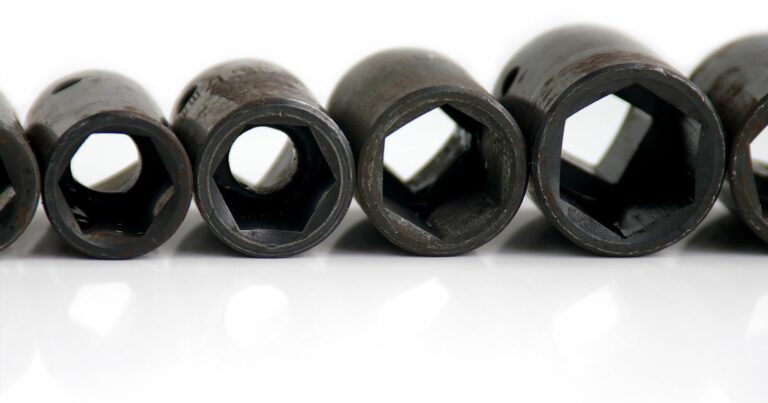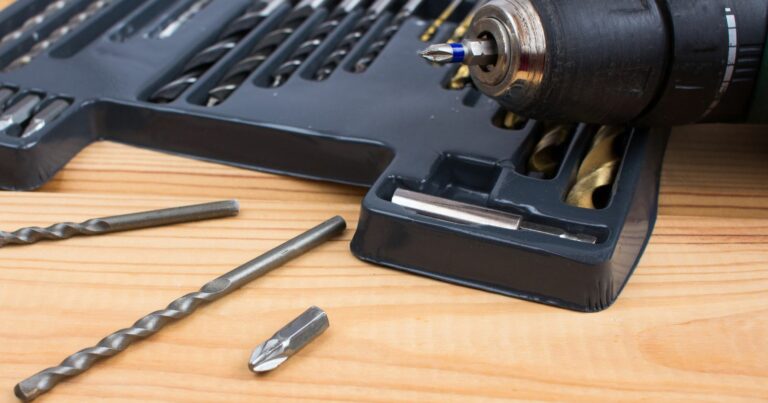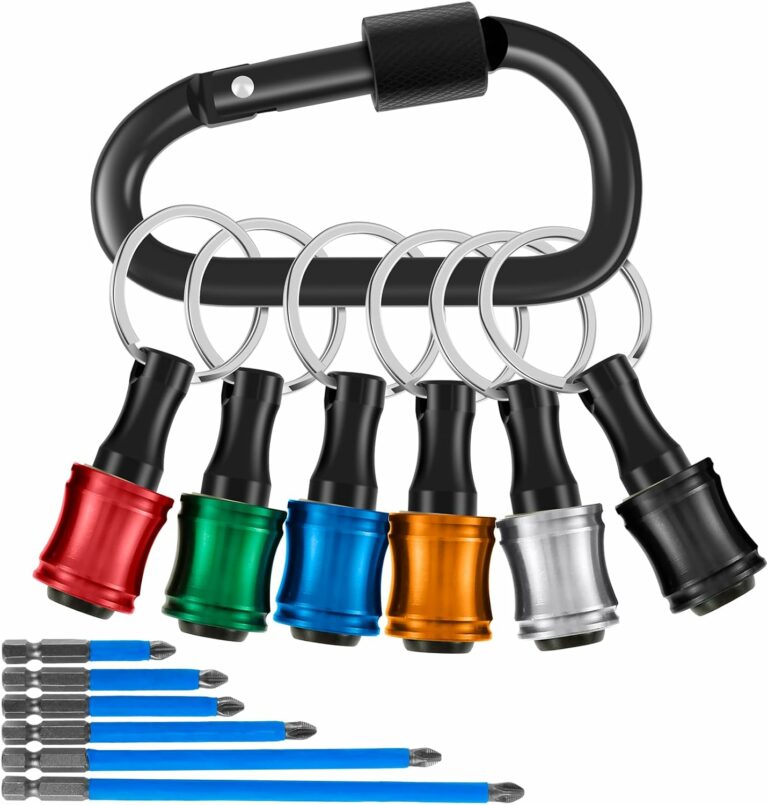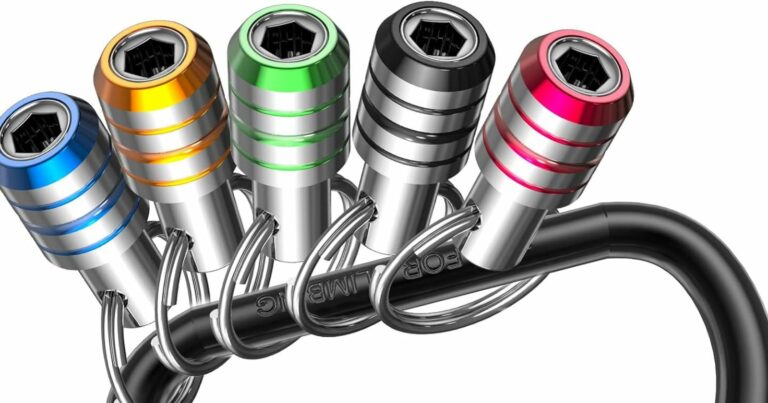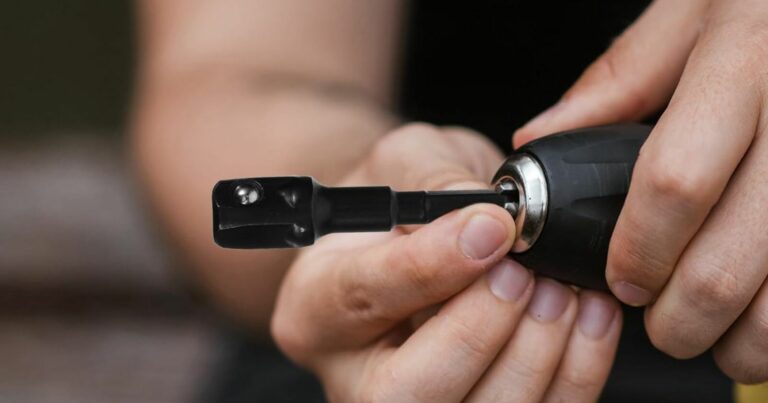Using Impact Driver Nut Drivers For Fast And Easy Tightening
In the world of DIY projects and professional construction, the difference between a job well done and a job that just gets done often boils down to the tools you use. The right tools not only make your work more efficient but also ensure that the end result meets or exceeds expectations. Whether you’re assembling a piece of furniture at home, constructing a building, or anything in between, the precision, ease, and efficiency you achieve are directly linked to the tools in your hands. This is why choosing the right tools is not just a matter of preference but a fundamental aspect of quality workmanship.
The purpose of this guide is to divek0kp[‘ into the specifics of using impact driver nut drivers, offering insights into choosing the right nut drivers for your impact driver, techniques for their effective use, and tips to maintain them in top condition. Whether you’re a seasoned professional looking for ways to optimize your workflow or a hobbyist eager to learn more about your tools, understanding how to effectively use impact driver nut drivers will be a valuable addition to your skill set.

How To Use Impact Driver Nut Drivers
Mastering the use of impact driver nut drivers not only streamlines your projects but also ensures you work safely and efficiently. Before diving into any task, preparing your work area and understanding the proper technique are paramount. Follow this guide to make the most out of your impact driver nut drivers.
Preparing Your Work Area
Safety Gear and Clean Workspace
- Safety Gear: Always wear appropriate safety gear before starting your project. This includes safety goggles to protect your eyes from flying debris, gloves to shield your hands, and ear protection if you’re working in a noisy environment.
- Clean Workspace: A clutter-free workspace minimizes the risk of accidents and makes it easier to focus on the task at hand. Ensure your work area is well-lit, organized, and free of unnecessary objects that could interfere with your work.
Step-by-Step Guide
Attaching the Nut Driver to the Impact Driver
- Select the Correct Nut Driver: Ensure the nut driver size matches the nut or bolt you intend to work on.
- Insert the Nut Driver: Slide the shank of the nut driver into the chuck of the impact driver. For models with a quick-release chuck, you may hear a click indicating the nut driver is securely attached.
- Test the Attachment: Gently tug on the nut driver to make sure it’s firmly in place.
Adjusting Settings for Optimal Performance
- Torque Settings: If your impact driver has adjustable torque settings, start with a lower setting for smaller or more delicate fasteners to avoid over-tightening.
- Speed Control: Use variable speed control to start slow and gradually increase speed, giving you more control over the fastening process.
Tips for Efficiency and Safety
- Avoiding Stripped Screws and Damaged Work Surfaces: Always ensure the nut driver is correctly sized and fully seated on the fastener before applying power. Begin at a low speed to establish control, then gradually increase as needed.
- Proper Handling to Reduce the Risk of Injury: Keep a firm grip on the impact driver with both hands when possible, and position your body to avoid kickback. Ensure your stance allows you to control the tool without straining.
By preparing your work area properly, choosing the right settings on your impact driver, and following these guidelines, you’ll not only work more efficiently but also maintain a higher standard of safety. Whether you’re a seasoned professional or a DIY enthusiast, taking the time to master the use of impact driver nut drivers can make all the difference in the quality and ease of your projects.
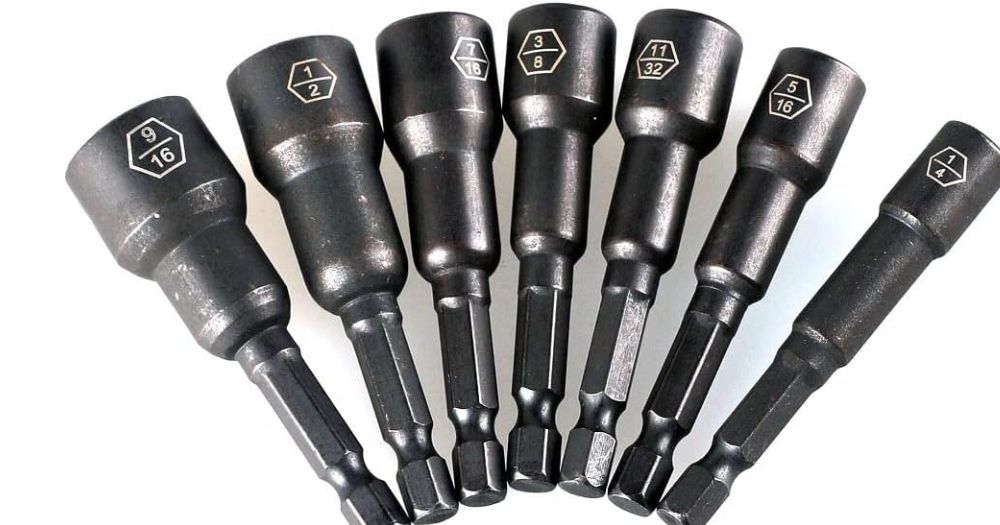
Advanced Techniques and Tips
Once you’ve mastered the basics of using impact driver nut drivers, you can elevate your skill set with some advanced techniques and tips. Different materials require different approaches, and knowing how to overcome common challenges can save you time and frustration. Here’s how to fine-tune your technique for various materials and navigate through typical obstacles.
Working With Different Materials
Adjusting Techniques for Softwood, Hardwood, Metals, and Plastics
- Softwood: Use a lower torque setting to avoid stripping the wood. If your impact driver has speed control, start slow to ensure precision and prevent damage.
- Hardwood: Hardwood requires a bit more power due to its density. Use a moderate torque setting and a steady speed to drive or loosen without damaging the material.
- Metals: When working with metals, you may need a higher torque setting, especially with rusted or over-tightened nuts and bolts. Apply steady pressure and use impact-rated nut drivers to handle the increased resistance.
- Plastics: Plastics are prone to cracking and stripping. Use the lowest torque setting and operate at a slow speed. Careful, gradual pressure is key to avoiding damage.
Overcoming Common Challenges
Dealing with Hard-to-Reach Nuts and Bolts
- Flexible Shaft Extensions: For nuts and bolts in awkward or tight spaces, consider using a flexible shaft extension. These tools can bend and flex, allowing your impact driver to reach and operate in confined areas without sacrificing control or power.
- Magnetic Nut Drivers: A magnetic tip can hold onto the fastener securely, reducing the chance of dropping it in hard-to-reach places.
Managing Torque Settings for Delicate Projects
- Gradual Adjustment: Start with the lowest possible torque setting and increase gradually until you find the minimum effective level. This approach is particularly useful for delicate projects where precision is more important than speed.
- Pulse Technique: Use a pulsing technique by repeatedly pressing and releasing the trigger. This gives you finer control over the torque applied, preventing over-tightening and allowing for gentle adjustments.
By adapting your technique to the material you’re working with and employing strategies to overcome common challenges, you can enhance the quality of your work and extend the capabilities of your impact driver nut drivers. These advanced tips not only improve efficiency but also contribute to the longevity of your tools and the materials you work on. Whether you’re a professional contractor or a dedicated DIYer, incorporating these practices into your routine will elevate your projects to the next level.
Watch This Video And Learn About Using Impact Driver Nut Drivers For Fast And Easy Tightening
Choosing the Right Nut Driver for Your Impact Driver
Equipping yourself with the right nut driver for your impact driver can be the difference between a job well done and one that’s just done. But with a variety of options available, how do you make the right choice? Understanding the differences in types, materials, and the importance of durability will guide you to the perfect pick for your projects.
Types of Nut Drivers
Magnetic vs. Non-magnetic
The choice between magnetic and non-magnetic nut drivers depends largely on your work preference and the nature of your projects.
- Magnetic Nut Drivers: These come with a magnetic tip that holds onto the nut or bolt, providing a secure grip. This feature is especially useful in tight spaces where holding the fastener by hand is difficult. It also reduces the risk of dropping and losing small parts.
- Non-magnetic Nut Drivers: Ideal for scenarios where magnetic interference is a concern, such as around sensitive electronic components. They require a steadier hand but offer the flexibility needed in specific environments.
Size and Fit Considerations
The key to maximizing the efficiency of your nut driver is ensuring it matches the size of the nuts and bolts you’re working with. A proper fit:
- Prevents damage to the fastener and the tool.
- Ensures that the applied torque is effective, reducing the effort needed to tighten or loosen.
- Minimizes the risk of stripping, which can be a time-consuming error to correct.
Material and Durability
When it comes to materials, not all nut drivers are created equal. The right material not only ensures longevity but also affects the performance of the tool under various conditions.
- Stainless Steel: Offers resistance to rust and corrosion, making it suitable for use in environments exposed to moisture.
- Chrome Vanadium: Known for its strength and durability, chrome vanadium is a popular choice for professional-grade tools that require frequent use and exposure to high torque levels.
Importance of Durability for Professional Projects
For professionals, the durability of a nut driver is not just about the tool’s lifespan; it’s about reliability. In the middle of a crucial project, the last thing you need is a tool that fails. Durable materials and construction mean your nut driver can withstand the rigors of heavy use, providing consistent performance that professionals can count on.
Selecting the right nut driver for your impact driver involves considering the type of work you’ll be doing, the materials you’ll be working with, and the conditions under which you’ll be working. By focusing on the type, size, material, and durability of the nut driver, you can ensure that you choose a tool that not only fits your immediate needs but also stands up to the demands of your projects over time.
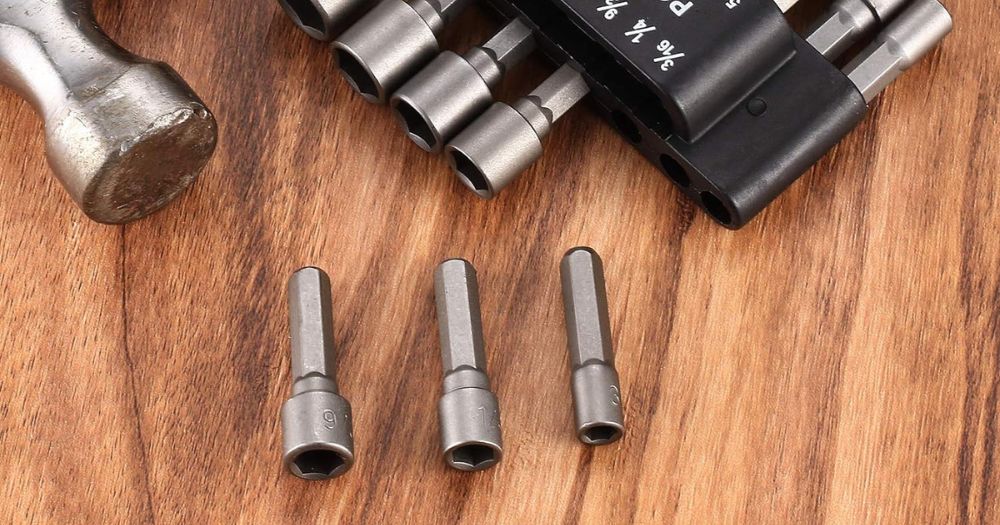
The Best Nut Drivers for Impact Drivers: A Review
When it comes to selecting the best nut drivers for your impact driver, the market is flooded with options. However, not all nut drivers are created equal, and finding the right set can significantly impact the efficiency and quality of your work. This section will review top picks suitable for both hobbyists and professionals, highlighting the features that distinguish high-quality nut drivers.
Top Picks for Hobbyists:
- Dewalt Impact Ready FlexTorq Nut Drivers: Known for their durability and precision. The FlexTorq technology allows them to flex up to 15 degrees, which is ideal for tight spaces and reduces breakage.
- Makita Impact Gold Ultra-Magnetic Nut Driver Set: Offers excellent magnetic technology that ensures your nuts stay put on the driver. It’s particularly useful for hobbyists working on projects where precision is key.
Top Picks for Professionals:
- Milwaukee Shockwave Nut Drivers: Designed for heavy-duty use, these nut drivers feature a strong magnetic tip and optimized shock zone, reducing stress at the tip for longer life.
- Wiha MagicRing Screw Holding Nut Drivers: These are perfect for professionals who need to hold screws securely. The MagicRing system uses a spring steel ring to hold screws in place, making it easier to work in difficult positions.
Features to Look for in High-Quality Nut Drivers:
- Magnetic Tips: Essential for securely holding nuts, especially in tight or hard-to-reach places.
- Impact-Ready: Look for nut drivers specifically designed to withstand the high torque of impact drivers.
- Material and Build Quality: High-grade steel or chrome vanadium for durability and corrosion resistance.
- Size Range and Identification: A good set should cover a range of sizes and have clear, easy-to-read size identification.
- Comfort and Ergonomics: For manual use, ensure the handle is comfortable and provides a good grip.
- Versatility: Some nut drivers come with interchangeable bits or are part of a larger set, offering more versatility for different tasks.
Whether you’re a hobbyist working on DIY projects during the weekend or a professional relying on your tools to make a living, choosing the right nut drivers for your impact driver is a decision that should be made with care. By focusing on high-quality materials, impact ratings, and user-friendly features, you can ensure that your investment enhances your workflow and stands up to the demands of your projects.
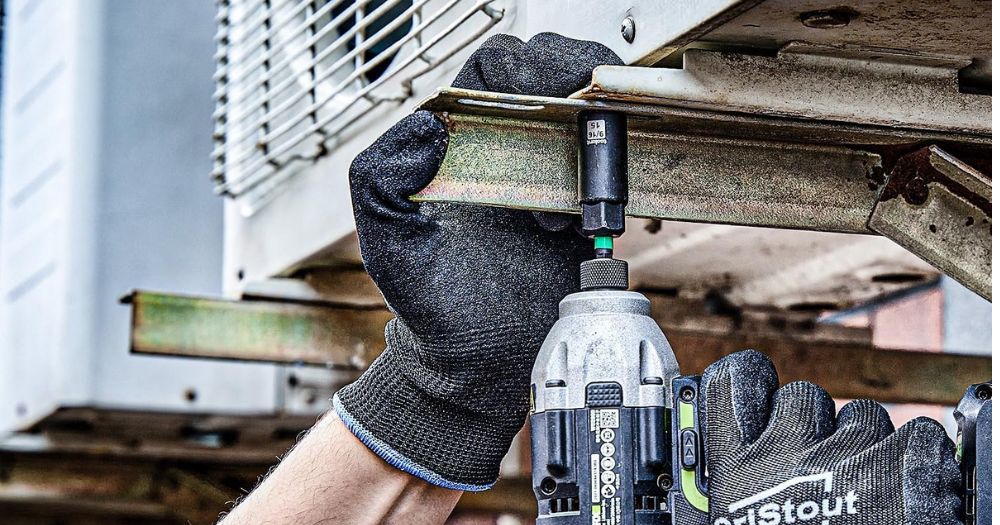
Wrapping Up Using Impact Driver Nut Drivers For Fast And Easy Tightening
In the journey of mastering your impact driver, the role of the right nut drivers cannot be overstated. As I’ve explored, these tools are not just accessories but essential partners that amplify the efficiency, precision, and versatility of your impact driving tasks. Whether you’re a DIY enthusiast tackling home improvement projects or a professional craftsman working on demanding construction sites, the synergy between your impact driver and the appropriate nut drivers can significantly affect the outcome of your work.
Join the community by leaving a comment below. Share your experiences, tips, or questions about using impact driver nut drivers. Your insights could help others in their quest for the perfect tool setup. Let’s continue to learn from each other and build a community where knowledge and experience are freely exchanged. Together, we can tackle any project that comes our way, armed with the right tools and a shared passion for craftsmanship.


